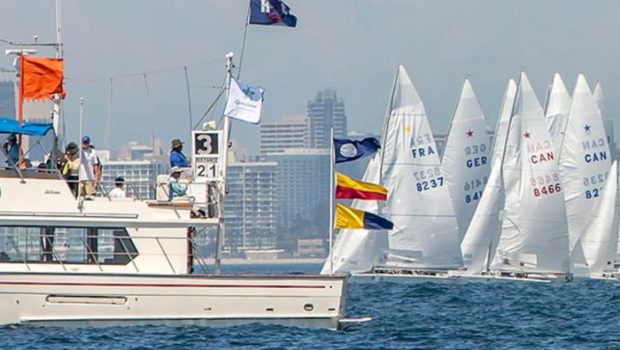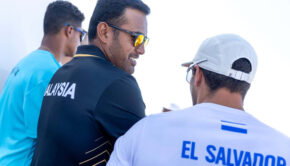Ensuring fun and fair racing
Published on July 28th, 2020
Those who run our races put in long hours on the water to ensure a quality experience. Race committees, judges and umpires spend years rising through the race-official ranks. As Gary Jobson explains, the common goal is to make all races fair and fun.
When everything on the racecourse is running smoothly, it’s important to remember that it’s because the race officials, leading to a fair and well-managed race, made good decisions. There are many variables that need to be addressed before a racecourse is set and the starting sequence commenced. While perfection is the goal, it’s incredibly difficult to achieve.
Pressure on race officers, judges, umpires and handicap measurers is immense these days. Highly motivated owners, professional crews and paid coaches push hard to win, again the reality that regatta organizers are staffed mostly by volunteers and have to deal with the strain of demanding competitors.
There have been many changes in our sport over the past 10 years: faster boats, foiling craft of all kinds, kiteboards, new race formats, more professional sailors and coaches, drone and onboard footage, and telemetry leading to more sophisticated analysis of performance. With such a fast-paced evolution, I regularly wonder if our race-official system is keeping up with the changing times. The answer is not straightforward; it depends on who you ask.
Race management across America was uneven 50 years ago. To its credit, US Sailing launched a series of standardized educational and certification programs in the 1970s in order to elevate the collective skill level of our essential race managers. The goal was to conduct safe, fair and compelling regattas. These educational programs have been painstakingly upgraded over the years. The efforts by many people have paid off for all stakeholders, and as a result, sailboat race management is better today at every level.
Matthew Hill, director of US Sailing’s Race Administration, recently explained to me that the organization is focused on consistent race administration across the sport. “Our task is to make it better,” he says. “One of our priorities is to improve the pathway to get certified.” To do so, he says, they continually update the curriculum and offer proper tests for officials at every level. “This is important because our race officers have to make safety decisions and keep racing fair,” Hill says.
Taran Teague, chair of US Sailing’s Race Officials Committee, says: “It’s serious stuff. You have to take time to run through the judge’s [certification] process. To go beyond the club level takes time and money to take educational classes, and you have to travel. We try to make an easy on-ramp for the club-level race official. To do this job, you have to be passionate. It takes a lifetime to be a good race officer.” – Full story








 We’ll keep your information safe.
We’ll keep your information safe.